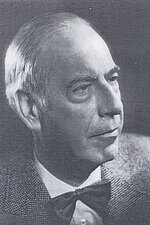ANES in Würzburg



Ancient Near Eastern Studies in Würzburg
The study of the languages and cultures of the Near East, especially the ancient Near Eastern cultures, stands in a long and rich tradition. In the early 17th century, the Jesuit and universal scholar Athanasius Kircher researched and taught oriental languages in Würzburg.
The connection between theology and the preoccupation with oriental languages stands at the beginning of ancient Near Eastern studies at the University of Würzburg. Johannes Hehn, a student of Friedrich Delitzsch and Hugo Winckler, was professor and chairman of the Institute for Old Testament Exegesis and Biblical-Oriental Languages from 1907 until 1932, and contributed to a better understanding of the Babylonian culture with his dissertation, Hymnen und Gebete an Marduk (Hymns and Prayers to Marduk, Leipzig 1903). He devoted special interest to the relationship between the Old Testament and the cultures of the ancient Near Eastern; cf. e.g. Wege zum Monotheismus. Rektoratsrede (Ways to Monotheism. Rectorial Address), Würzburg 1913 (added to the Index Librorum Prohibitorum of the Roman Catholic Church in 1925).
An independent post for oriental philology was created in 1908, already at that time within the framework of the Faculty of Philosophy. The holder of the post, Maximilian Streck (Ordinarius for oriental philology since 1916) worked primarily in the field of ancient Near Eastern studies. His edition of the Ashurbanipal inscriptions (Assurbanipal und die letzten assyrischen Könige bis zum Untergang Ninive’s, Leipzig 1916) remains an important reference work, even up to the present day. Simultaneously with Maximilian Streck's retirement in 1939, the Institute for Oriental Philology was abandoned in the context of the ideological and cultural climate of Nazi Germany
Already in 1947, only two years after the end of the Second World War, the Insitute for Oriental Philology was re-established and has since been continuously active in the research and instruction of ancient Near Eastern studies. Theo Bauer, who contributed especially to the edition of Neo-Assyrian royal inscriptions, was chairman of the institute and professor from 1947 to 1956.
From 1958 to 1973, Wilhelm Eilers, a scholar of the ancient Near East as well as a legal historian, was professor and chairman of the Institute for Oriental Philologie; Iranian studies were a special focus of his work.
Under Eilers' successor Einar von Schuler, the study of the Hittite culture became, for the first time, a central emphasis of the research and instruction of the Institute in Würzburg from 1974 onwards; this was also an emphasis of Heinz Kronasser, Günter Neumann and Helmut Nowicki - all of the Institute for Comparative Linguistics in Würzburg. Due to poor health, Einar von Schuler was forced to retire in 1987 and passed away but a few years later on 15 February 1990; a detailed description of his scholarly achievements prefaces his memorial volume (G. Wilhelm and M. Marazzi, Orientalia Nova Series 59, 1990, 103–6).
From 1988 until the beginning of 2010, Gernot Wilhelm held the Chair for Ancient Near Eastern Studies; during the same time period Josef Bauer held the post of a professor of Ancient Near Eastern Studies (Sumerology). Under Wilhelm's aegis, the study of the ancient Near East in Würzburg, as a field of expertise in the cuneiform cultures of the entire ancient Near East, has earned the highest reputation. The section became firmly established within the Department of Ancient Cultures at the University of Würzburg. In 1999, the 4th International Congress of Hittitology was organised in Würzburg, and in 2008, Gernot Wilhelm could welcome the participants of the 54th Rencontre Assyriologique International ein Würzburg.
Daniel Schwemer was appointed to the Chair or Ancient Near Eastern studies as Gernot Wilhelm's successor in 2011. In addition, Karlheinz Kessler was active in research and teaching in Würzburg from 2007-2014.






